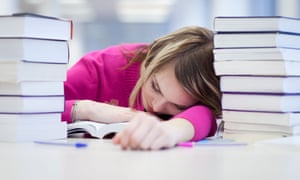
What price can you put on a child’s education? It depends on who that child is. New figures show the average fee for attending a top private school has now risen above £17,000 a year for the first time. In contrast, a child attending a state school in England can expect to have £4,000 to £6,000 spent on them, depending on location and additional allowances. This would be worrying in any circumstances but when we have crumbling and cramped state schools, it feels almost grotesque. While some children enjoy drama halls and swimming pools, others are trying to learn surrounded by leaks, mould and vermin.
Inequality in education is not a new phenomenon. Even before vast underfunding set in, we had one of the most unequal school systems in the developed world. Private schools, remarkably, still retain charitable status, a gift from the taxpayer for retaining privilege. (The chair of the Headmasters’ and Headmistresses’ Conference, which represents most of Britain’s leading public schools, once compared making greater links between private and state schools as a condition of their tax break to the ordeal of forced marriage.) There is also rampant inequality even within the state sector, with middle-class offspring more likely to get a better deal from a comprehensive.
As Diane Reay, Cambridge University professor of education, who herself grew up on a council estate, points out, pupils in the more working-class comprehensives get less money per head, less qualified teachers, and higher levels of teacher turnover. Even if they are in the same schools as wealthier children, they tend to be in lower sets and get less experienced teachers. Throw in the introduction of academies, and this division only increases. In 2015, a Guardian investigation found that free schools received 60% more state funding per pupil (£7,761 in 2013-14) than local authority primaries and secondaries.
With aching predictability, austerity measures have made this situation worse. Last year, an analysis of Department for Education data revealed that schools with the highest numbers of pupils on free school meals are facing the deepest funding cuts. Ministers have chosen to make “savings” predominantly off the back of low-income pupils in an education system that was already stacked against them.
Instead of investing in existing state schools, the government has wasted money on vanity projects. Since the Conservatives’ free schools policy was introduced in 2010, it’s pushed funding from other pupils, often paying way over the odds for the land and even diverting £96m to academy budgets originally intended for improving in-need comprehensives.
How has this plan worked out? This month, Plymouth studio school announced it would be the latest free school to close, only a couple of days after the Isle of Wight studio school said it would do the same due to lack of demand. The National Education Union (NEU) calculates that the latest closures bring the total to 66 new schools launched under the government’s flagship policy that have closed, partially closed or failed to open at all. “Free school” is a misnomer: while teachers are running out of paper for their classrooms, this ideological failure has cost the education budget almost £150m.
Bear in mind also that free schools predominantly serve wealthier communities. Free schools and academies, just like grammar schools, educate significantly fewer children in receipt of free school meals (in fact, half of all free school meal children are educated in just a fifth of all schools). The ideology of “choice”, be it private or free school, has always been code for “inequality”.
It’s an inequality that feels particularly desperate right now. Britain as a whole is becoming more and more divided, as the wealthiest individuals see their fortunes surge by hundreds of billions, while food banks are handing out a record numberof parcels. Soaring child poverty is the unforgiving result of this: schoolchildren left to sleep on cardboard boxes before going to class the next morning; malnourished, tiny bodies, stuffing their pockets with food at school, or taking scraps from the school bins, because their parents can’t afford a hot meal at home.
Guardian Education this week reported that deprivation has reached such a level that teachers are helping parents pay for underwear, a mattress, and even non-uniform clothes for weekends “so they can feel normal”.
It is well-established that unequal societies create damage not only for the poorest but also for the whole population. The Harvard professor Ichiro Kawachi describes inequality as a “social pollutant” – a rot that breeds anything from mental health problems and loss of community to reduced wellbeing.
Education – that supposed leveller and bastion of opportunity – far from providing a route to a better life in this country, is only replicating this inequality. Whether it’s tax breaks for private schools, futile free schools, or underfunded comprehensives, we are sleepwalking into an ever deepening class system – one in which a select few are given the tools to excel, and the rest are abandoned to the scraps. A time in which school inequality is deepening against a backdrop of rocketing child poverty may feel a hopeless point for progress but really, it should be a call to arms. It is not radical to say children from low-income families matter just as much as those born, on the roll of the dice, to advantage. Well-funded schools are the bedrock for a decent future – not just for some kids but for all of them.
source:-theguardian.
